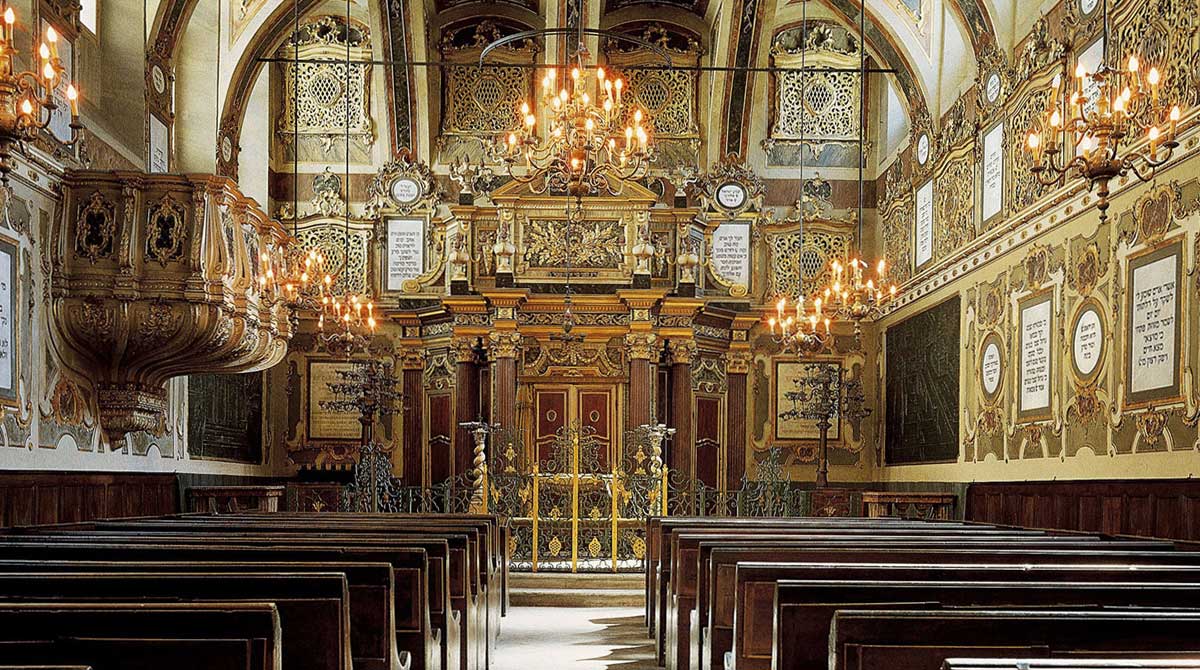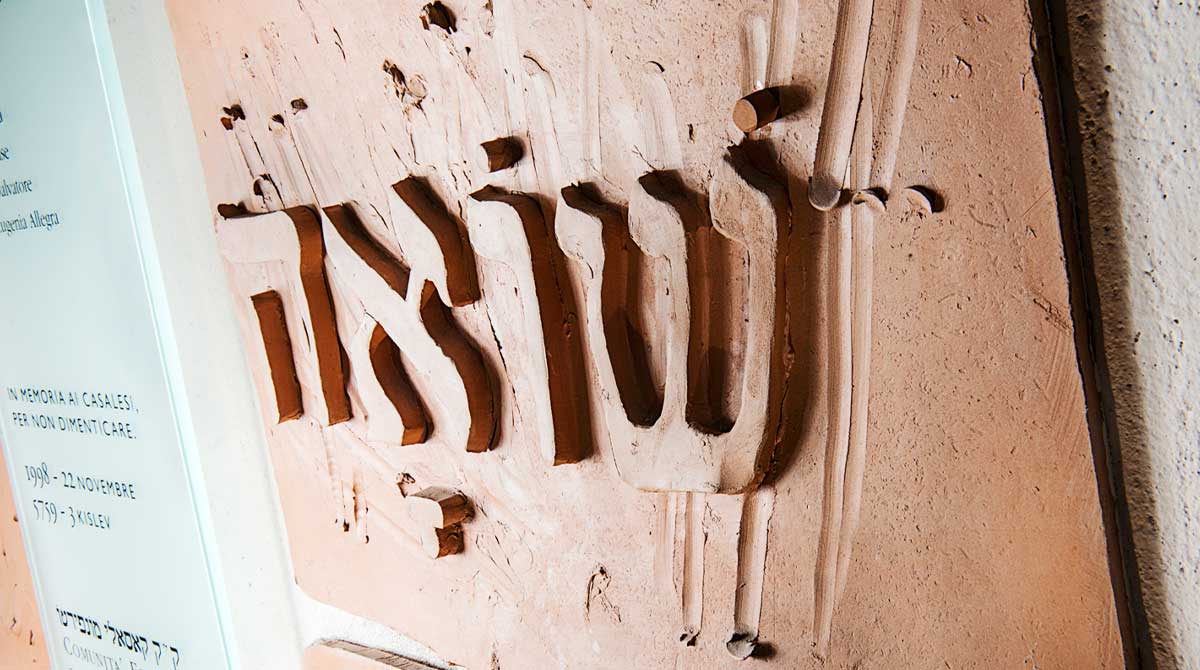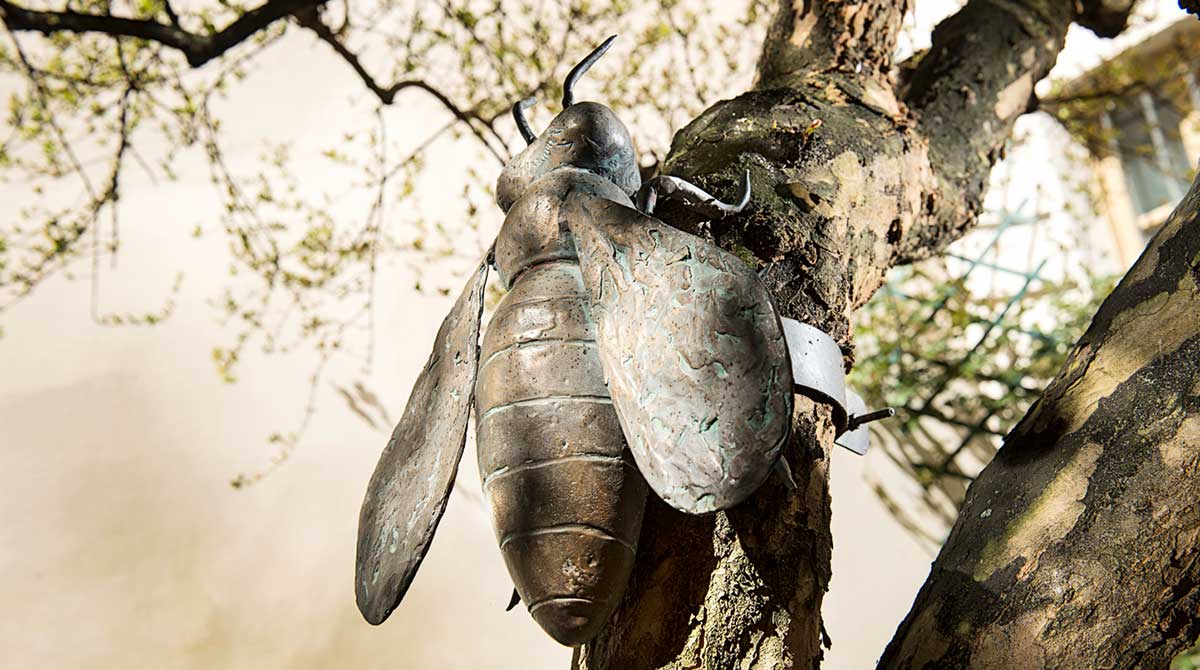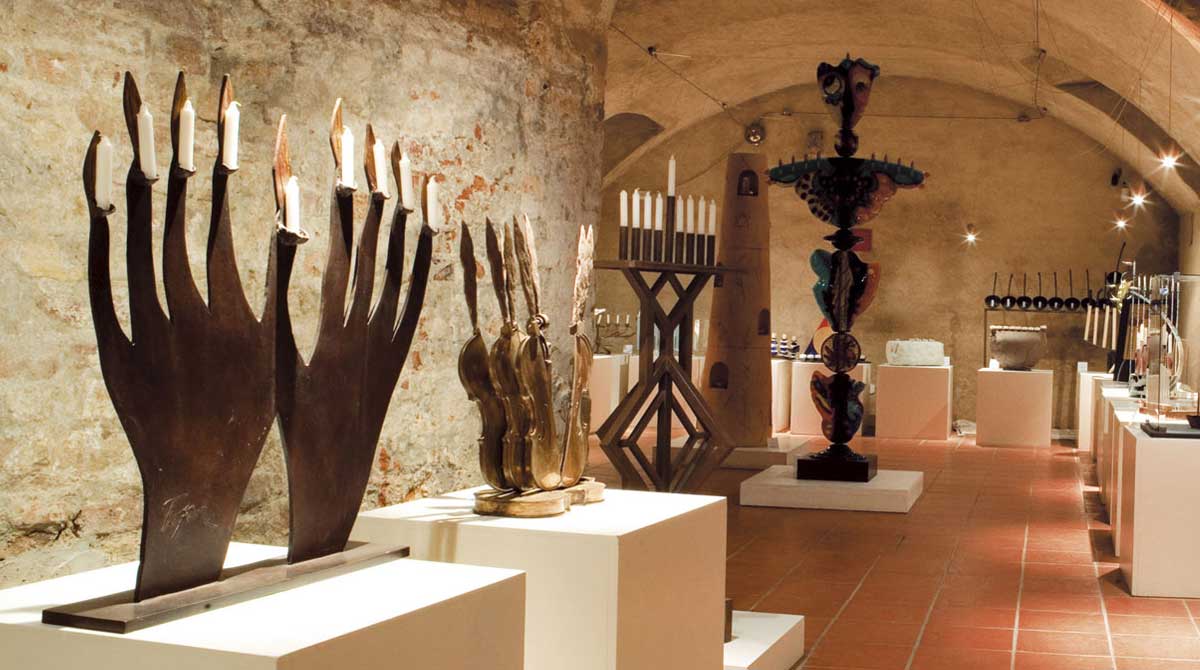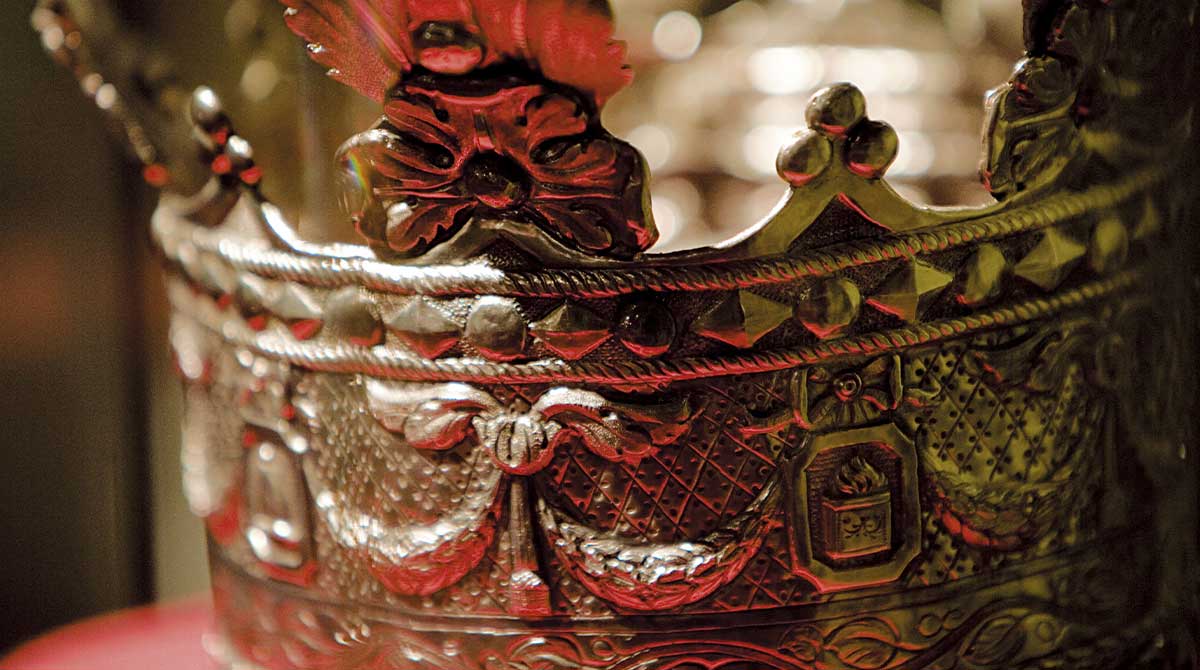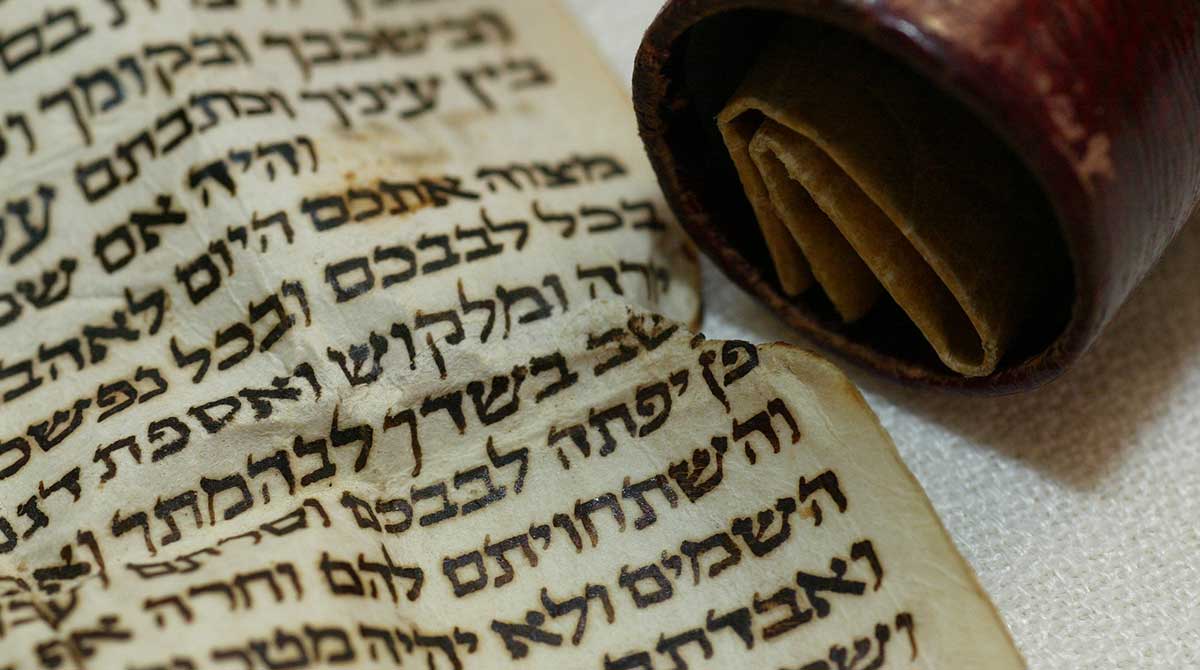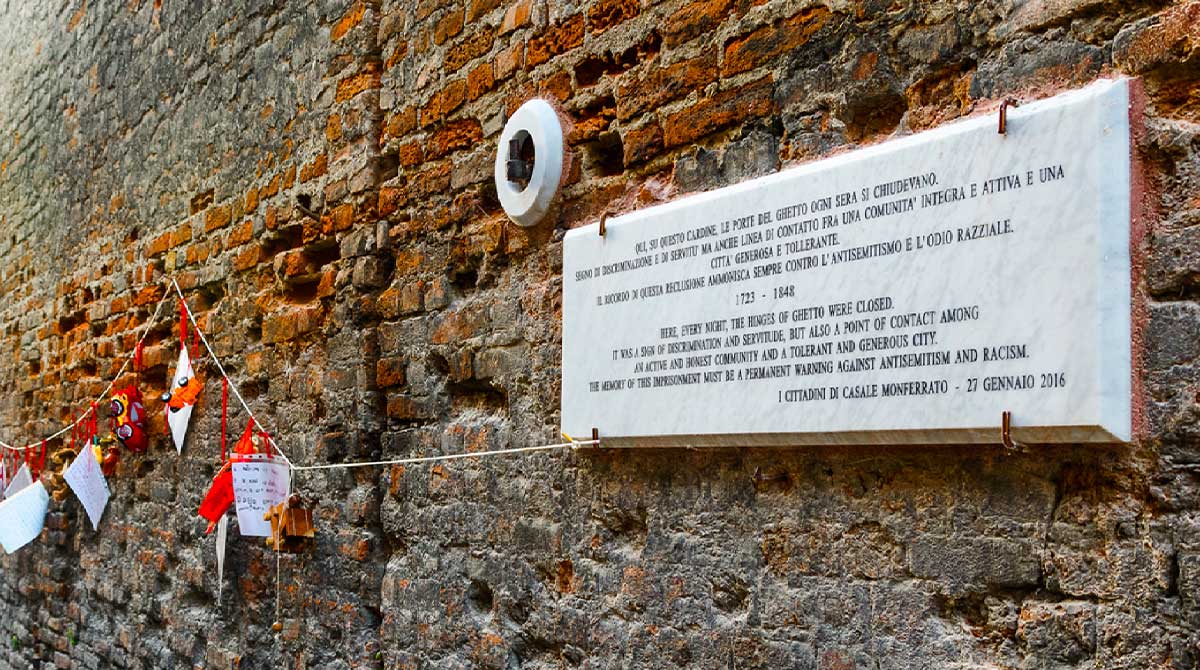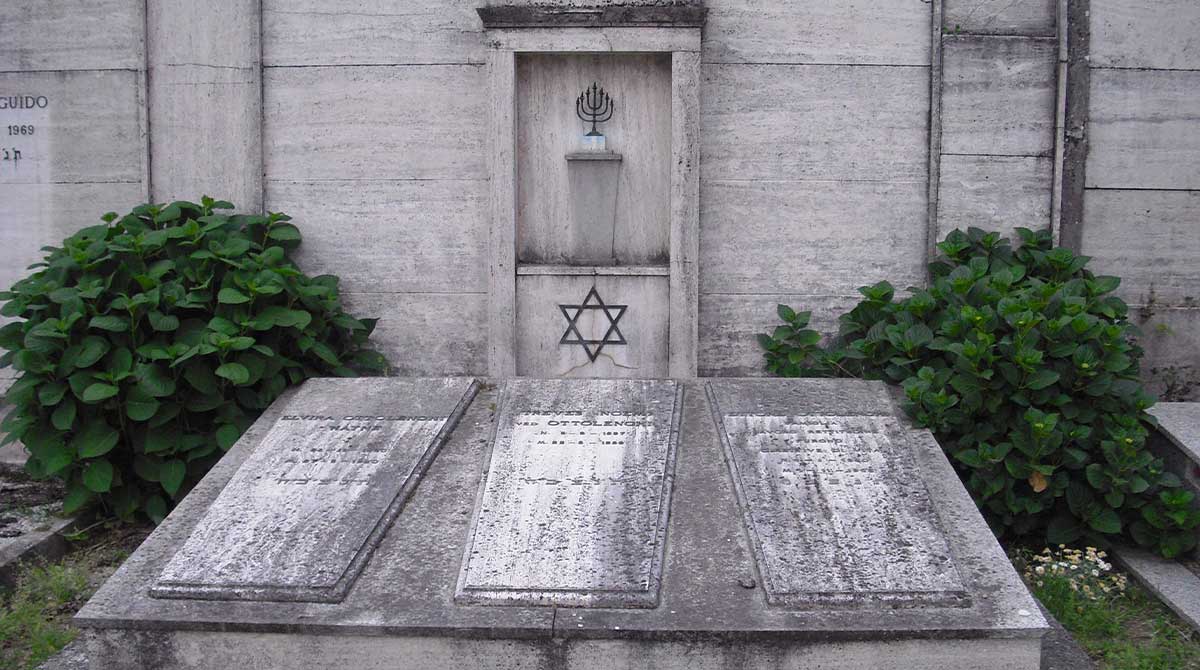The building occupies one side of today’s Vicolo Salomone Olper, formerly Via degli Israeliti. In the past, this narrow street was not a thoroughfare; one had to walk through courtyards, passageways, and corridors along a hidden route to reach it. The synagogue also never had a façade; the entrance was always from the courtyard. This was because, until 1848, it was forbidden for synagogues to be visible from the outside and to have direct access from the public street.
Over time, in addition to the synagogue, the Silver Museum, the Museum of Lights, the exhibitions held in the Carmi Room, numerous concerts, performances, and recitals of texts and poems, another necessary means of development and relationship has found its way: visual and contemporary art, which interacts, even permanently, with the architectural structure and with everyone who passes through it.
In addition to the Jewish complex, two cemeteries (one of them ancient and no longer in use) and the ghetto, which is still partially recognizable by the conformation of the buildings and a hinge visible in Alexandria Street, testify to its presence in the area.
